
Alina Caravaca is 56 years old and lives in Playa Conchal with 10 other people, sharing a place made with corrugated steel, wooden walls, fibrolit boards and a cement floor. Under that roof, they are all family: her romantic partner, five children and four grandchildren.
Her hut overlooks the beach. The closest neighbor is about 500 meters (0.3 mile) away, she says, and when it rains or the tide rises, she is cut off, as if she lived on “an island.” The only way to get to her house turns into a river that can’t be crossed in the middle of a storm. And at high tide, the water also reaches the house.
With the pandemic, Alina’s house is in conflict with guidelines from health authorities in the midst of the health emergency. It is impossible for them to isolate from each other if someone in the family comes in contact with someone who is COVID-19 positive or even if one of them becomes ill.
Like this family, there are 3,570 overcrowded households in the Chorotega Region, according to the most recent data from the National Household Survey (Enaho, 2019) of the National Institute of Statistics and Censuses (INEC). Most of them (67%) have a woman like Alina as the head of the household.
In Guanacaste, 2,390 overcrowded households have a woman as the main or only financial provider and 1,180 have men as the family head. In other words, more than half of the households with overcrowding are headed by a woman. This was revealed by an analysis done by The Voice of Guanacaste and the Housing Promotion Foundation (Fuprovi) based on data from the National Household Survey.
“Thank the Lord no one has had COVID. God forbid,” says Alina.
Guiselle Cruz, epidemiologist for the Costa Rican Social Security Fund (CCSS), calls houses like Alina’s “intergenerational homes” and explains that the risk of someone worsening as a result of the coronavirus is greater in them.
Cruz explained that if someone gets sick in a crowded home, there is a greater probability that the other people will also contract the virus due to not having measures to isolate themselves correctly. This causes a greater amount of the virus to accumulate in the house’s environment and a person with risk factors gets worse faster.
The viral load (or concentration of the virus in the body) accumulates to the point where a person becomes seriously ill,” Cruz explained.
In addition, overcrowded houses tend to have poor ventilation, which prevents fresh air from entering to dilute the virus particles.
With overcrowding, another problem becomes evident that ends up complicating the picture: poverty.
Cruz added that the poorest people are the ones contracting the novel coronavirus the most. “We know that these are people who are self-employed, who don’t have formal jobs and who have to go out to work to get by day by day, so getting the people to comply with isolation and quarantine is complex.”
In Alina’s case, before the pandemic, she made money renting toilets to tourists who needed them. She also made empanadas, cakes and olla de carne (a beef and vegetable soup) that she sold to neighbors or on the beach. But without tourists, and with her neighbors also hard-hit economically, her income fell to zero.
On a good weekend, she said she made about ¢100,000 (about $175), with which she paid for water, electricity and bought the ingredients necessary to cook her dishes again.
“[Before the pandemic], we lived better because it wasn’t as difficult for me as it is now that sometimes we go without, no one has anything… My son worked on a sailboat in Tamarindo. My other daughter also lost her job because she worked in a small restaurant and my other daughter painted nails, but it closed and things haven’t reopened until now,” Alina related.
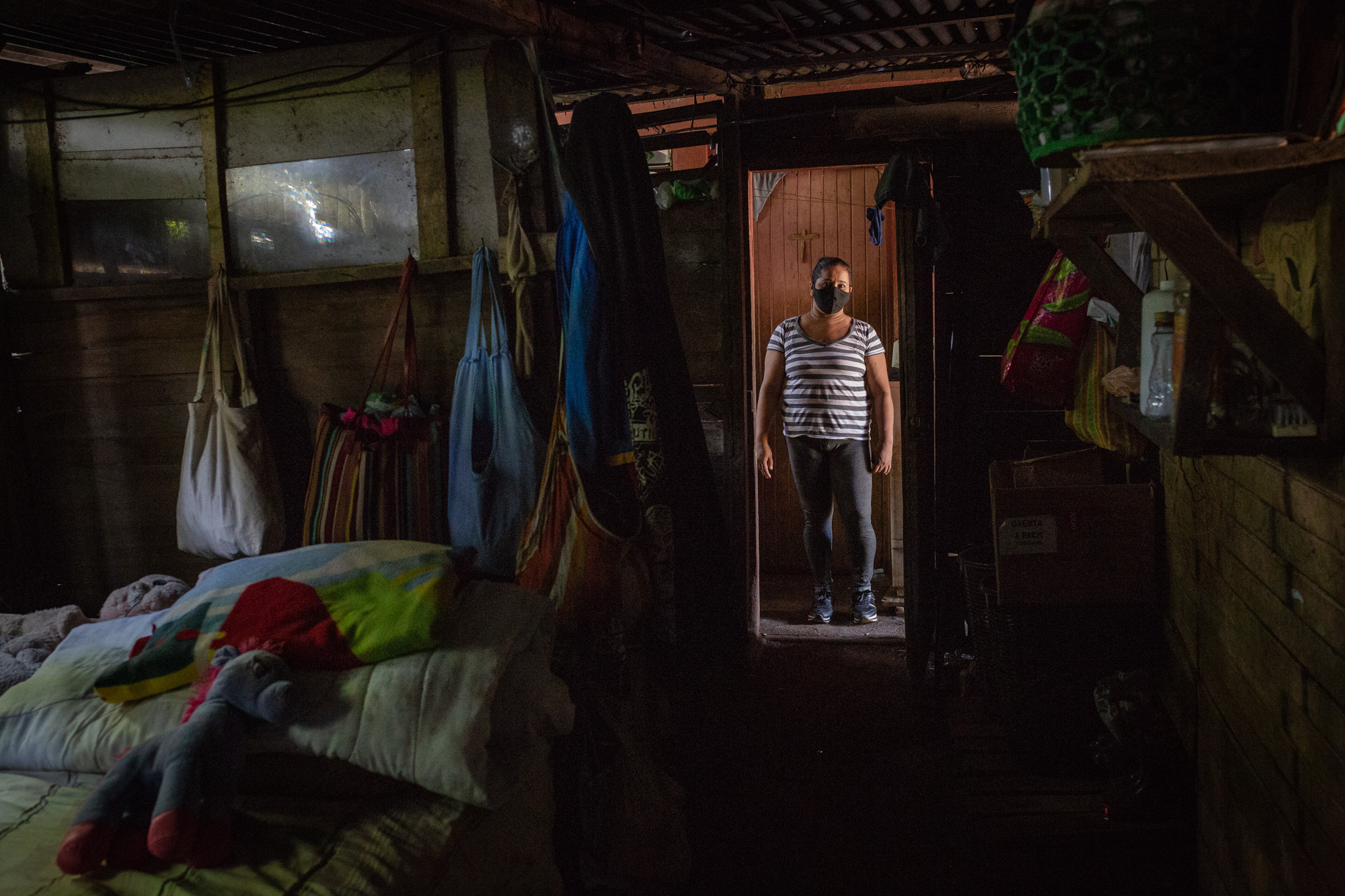
Gina Hernandez lives in the San Martin neighborhood in Nicoya. For five years now, she has been living in the back of her parents’ house in a “rancho,” as she calls it. “We don’t have the conditions here [to isolate if we get COVID-19],” she said. A curtain functions as a door for the only bedroom. She and her two youngest children sleep on a mattress. Photo: César Arroyo Castro
The impact of the pandemic in and of itself is different for men and women. “Stay-at-home orders have increased the workload related to caregiving, which falls primarily on women,” states a document from the Organization of American States (OAS) and the Inter-American Commission for Women (CIM). The analysis lays on the table the impact of the pandemic with a gender perspective.
Another document from the United Nations indicates that women are the ones who tend to carry more of the responsibilities of procuring and cooking food and being in charge of access to basic services such as water and electricity.
That is the way it is for Gina Hernandez, who lives in the San Martin neighborhood in Nicoya. Five years ago, she moved into the back of her parents’ house when she couldn’t keep paying for her former house. The money she had just wasn’t enough.
She and her four children live in a place with a dirt-floor, with curtains instead of doors, no ceiling, wooden walls and exposed electrical wires.
During the pandemic, the children started having virtual classes at home and Gina had to rethink her family arrangement.
I had to take my children to my sister’s so she could take care of them because I couldn’t leave them here alone, and now I’m going back and forth. I have to pay her, pay for things here and I have less time to work,” she said.
Gina cleans houses and irons clothes. In one day, she earns about ¢8,000 (about $14). Weekly, with luck, she manages to make about ¢20,000 ($35) to divide up between the household expenses.
“In my case, I think that taking on both roles, being father and mother, is more difficult, because what family is going to live with such a low salary and more so at this point,” she remarked.
She doesn’t even want to think about the coronavirus. Just imagining that one of her children gets sick or worse yet, that she gets infected with the virus, generates immediate fear.
“The space here, the convenience, is not very adequate. There are times when if I think about it, I feel anxiety. I get stressed out. Because if I get sick, how do I provide food?” she said.
But this combination of poverty and overcrowding is not just Gina’s reality.
Of all the households in Guanacaste with women as heads, 7.5% (more than 3,600) live in houses that are in poor condition. For example, their walls, ceiling or floor are seriously deteriorated to such an extent that they become a danger to those who inhabit them, explained Jairo Aguilar, from Fuprovi’s investigation unit.
Aguilar added that the households with the lowest incomes are the ones that most often report having female heads, according to the review of the 2019 Enaho data.
In addition to poverty conditions and the responsibilities for caring for their families, they face another vulnerability. Women have less access to credit, which they could use to improve housing and living conditions for them and their families.
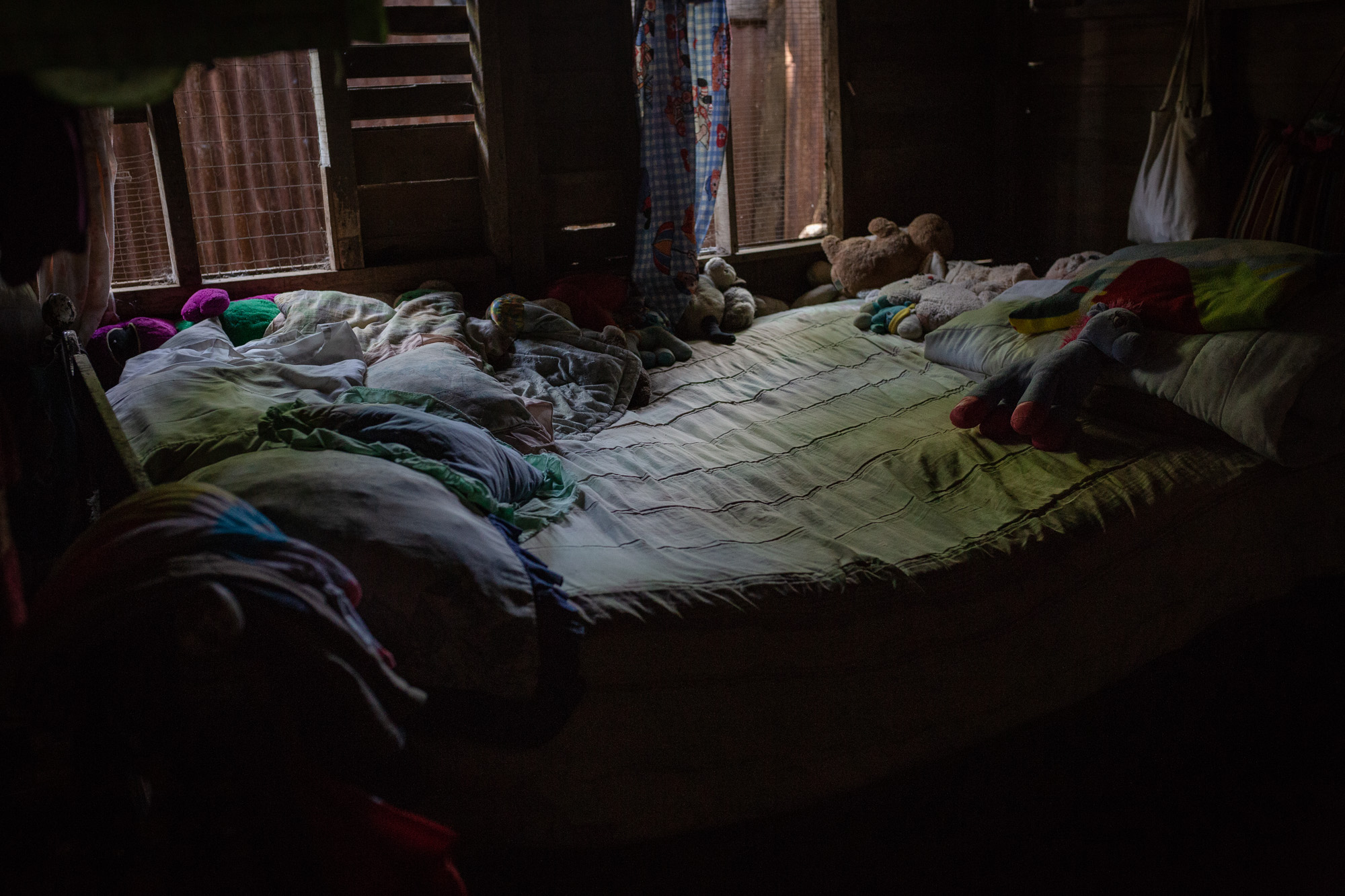
Gina Hernandez sleeps in a bed in the middle of the halfway with her children Nicole (age 7) and Dyron (age 4). The youngest children don’t have their own bed, much less their own room. Her other two children, Aleska, 16, and Daniel, 12, share the only room in the house, although “sometimes the four [children] all come and get in here,” Hernandez says with a smile. Photo: César Arroyo Castro
Gina said that before the pandemic, she was inquiring about applying for a bonus with Banhvi, but now that “came to nothing.”
In fact, the COVID-19 crisis pummels the most vulnerable people over and over again. Some 570 families in the Chorotega region, 63% of which have female heads, could end up without a housing bonus due to the decrease in income from the Social Development and Family Allowances Fund (Fodesaf) and the budget cut to the solidarity tax of Law No. 8683 proposed by the government, detailed by the Chamber of Social Housing Financing Entities in a press release.
According to a document from OAS and CIM that analyzes the pandemic from a gender perspective, situations like these exacerbate the vulnerability of women heads of households, who are usually poorer and have less access to safe housing and associated resources such as drinking water and sanitation.
Women have to continue managing productive work, if they still have it, and reproductive work (child and other dependent care, domestic work, and the education of children) in the extremely limiting circumstances of confinement or quarantine,” the document indicates.
“The indicators “not working because of care work” and “single-parent household headed by women” must qualify to receive benefits and affirmative actions, in the form of cash transfers or other immediate relief measures, as well as opportunities in the medium and long term,” it further states.
Having adequate housing will continue to be an illusion for Gina. “You know that at Christmas, we put a cypress branch here, as a little tree, and among the gifts that are put under the tree, my children once drew a house and put it there. They want a house, to be comfortable.”
And if the virus strikes…
In overcrowding and poverty, the Ministry of Health guidelines are designed for families who have the possibility of keeping their distance within their homes to avoid infecting everyone else in their family.
The Ministry of Health’s guideline for probable or confirmed cases and those under investigation specifies that the person must be isolated in a separate room with direct ventilation to the street, with a closed door and with a bathroom exclusively for the sick person. In addition, it suggests that there be an intercom like a baby monitor or that the person communicate only by cell phone.
In practice, homes like Alina’s and Gina’s do not have the capacity to ensure these measures, but according to epidemiologist Guiselle Cruz, health officials analyze each case to determine how to keep the people at greatest risk safe, to prevent getting infected.
“What’s most common is for them to remain in isolation in the house even when they live in overcrowded conditions, but the important thing is to define who is the most vulnerable person to decide whether to take them somewhere else or keep them in the house,” Cruz summarized.
That means that they won’t always take the person with COVID-19 away from the home. Instead, they may choose to move someone who doesn’t have the virus but who has some risk factor.


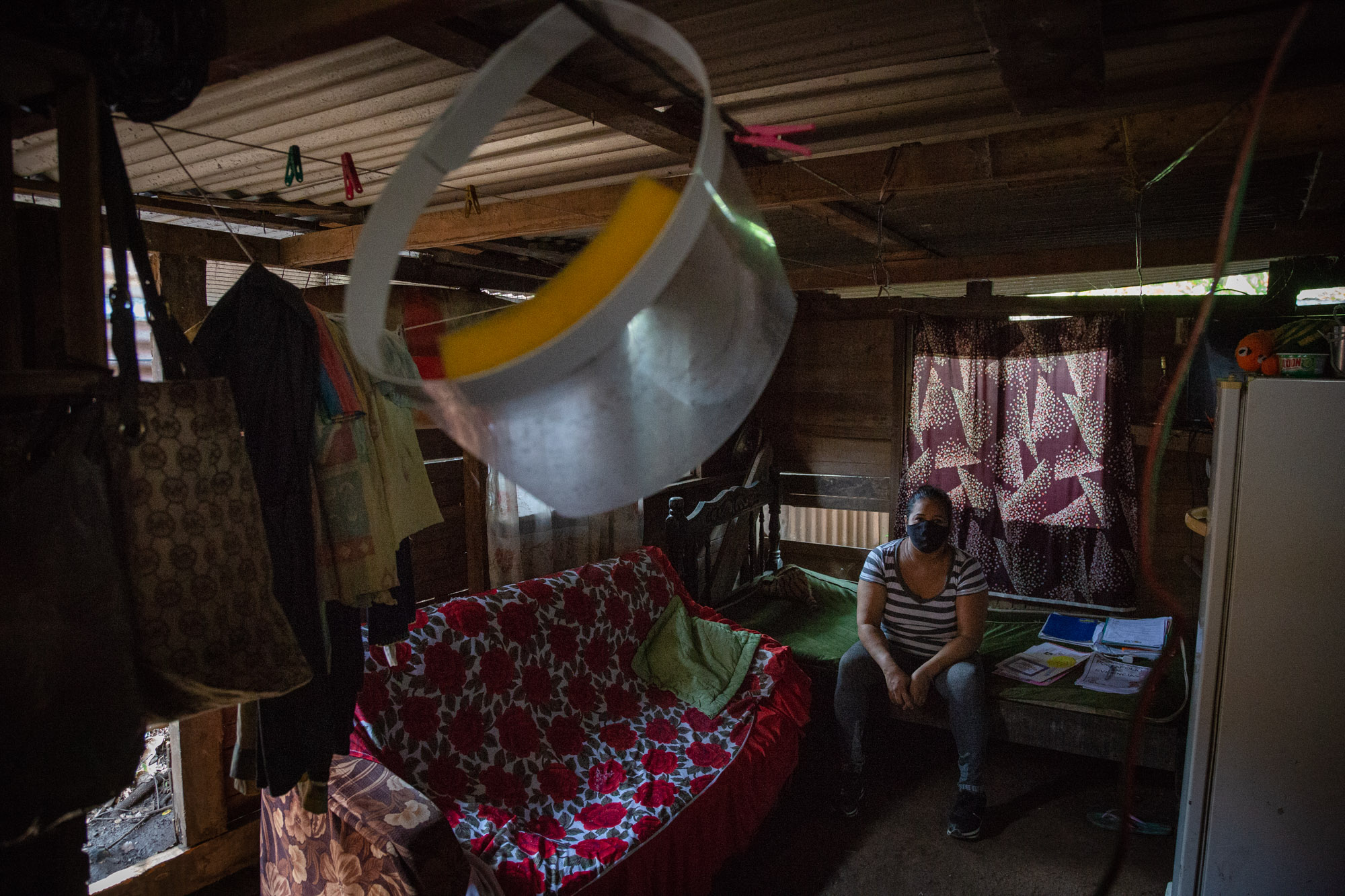
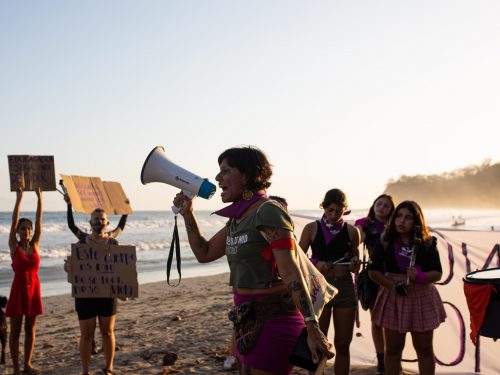
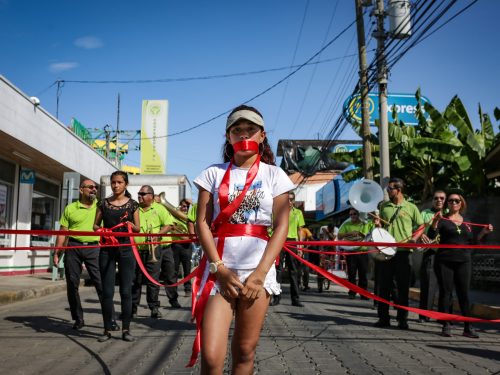
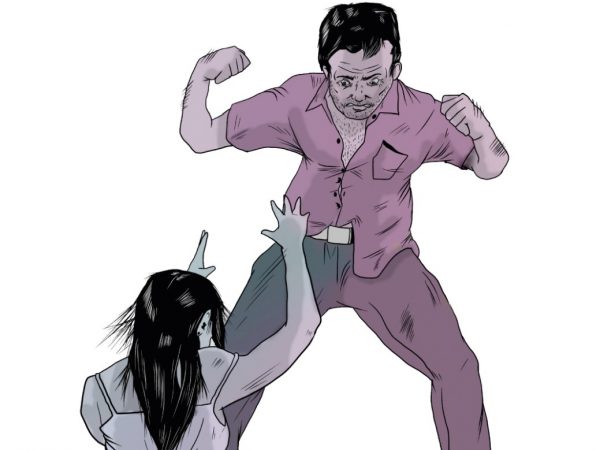

Comments